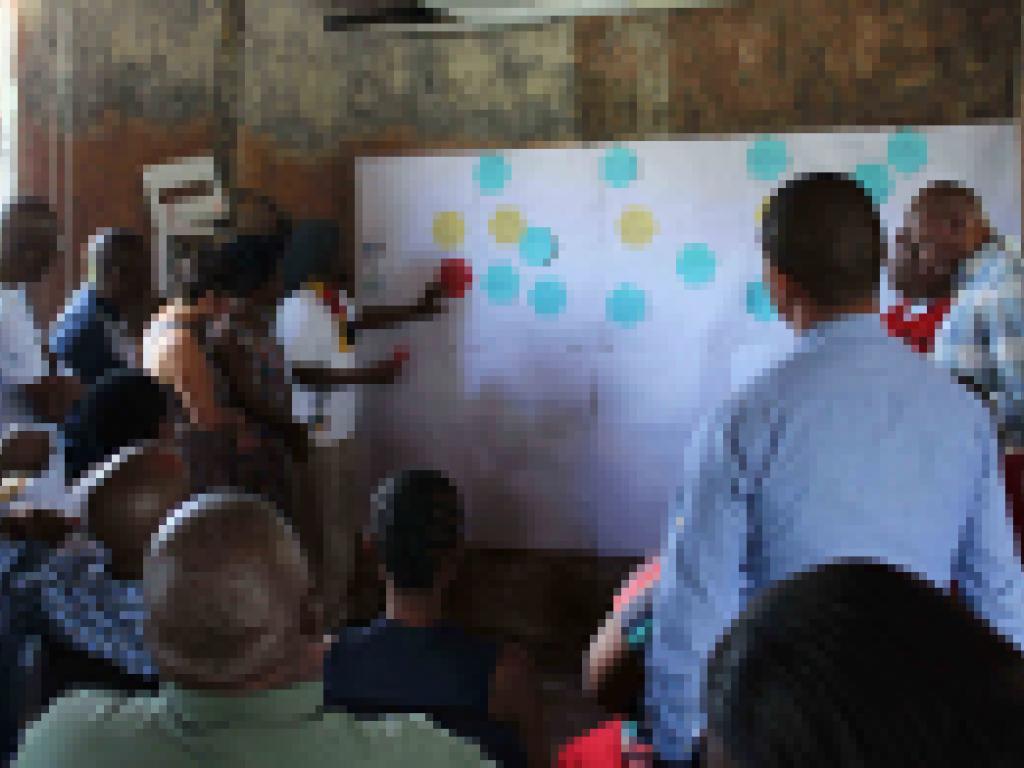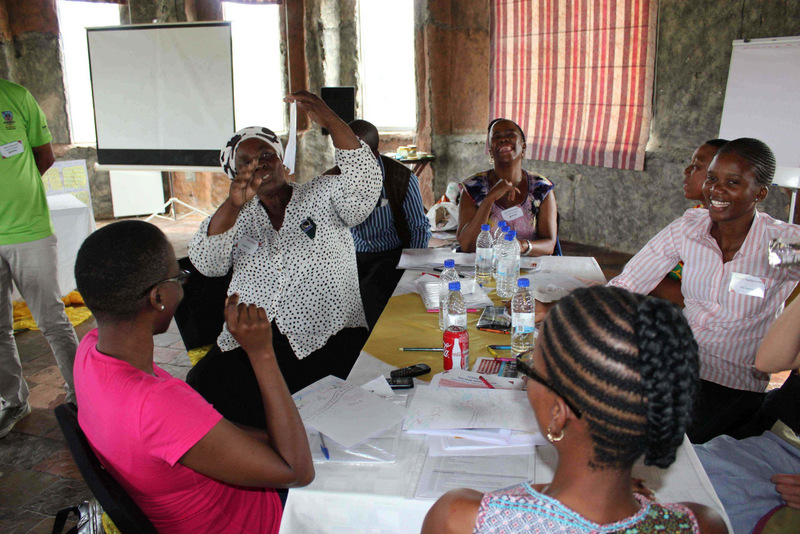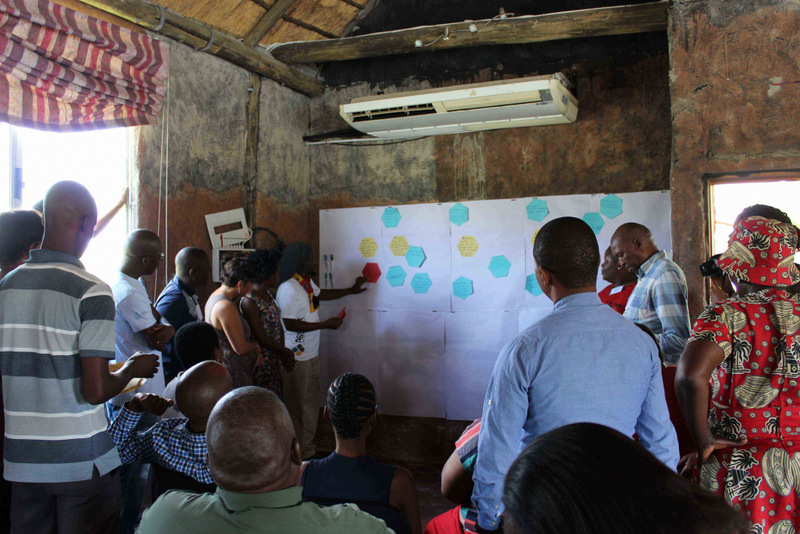Using TSP to think differently about the future of land use in Bobirwa, Botswana

What is the future of land use in Bobirwa sub-district up to the year 2035?
How do land-use challenges in this region intersect with issues of human-wildlife conflict?
What can and must we do to adapt to change, and to achieve the future that we desire?

These are some of the questions that were addressed during the TSP process in Botswana, which comprised of two workshops, held in October 2017 and January 2018 at the Oasis Lodge, Zanzibar.
Whilst human-wildlife conflict and optimal land utilisation do not fit neatly into any of ASSAR’s research themes, it was evident that these issues were of pressing concern to local communities in the Bobirwa Sub-District.
With this in mind, the ASSAR team and Reos Partners, along with the local stakeholders, agreed that we would use the TSP methodology to address these concerns, albeit with an understanding of the broader STEEP (Social, Technological, Environmental, Economic and Political) context within which these issues play out.
In Bobirwa, people’s concerns about land use stem from the misunderstanding that communal (open access) land is less fertile than freehold (privately owned) land. However, the difference in productivity actually lies in the manner in which freehold land is managed, as opposed to the fertility of the soil itself.
Through the TSP workshops, people were able to better understand this. For instance, a ‘grassroots’ woman reflected that she had learnt from other stakeholders about how she could improve her farming methods to ensure better crop productivity and thus food and livelihood security.
Moreover, one of the ‘action points’ identified at the end of the TSP process was to encourage communities to adopt new and improved farming methods such as Climate Smart Agriculture.
However, stakeholders felt that the success of such methods may be limited if the problem of human-wildlife conflict was not adequately addressed. This issue is of primary concern for small-scale and subsistence farmers, whose crops are frequently destroyed by elephants, and for local villagers whose lives are endangered by wildlife.
The TSP process brought together a diverse group of stakeholders, helped them to see key issues with fresh eyes, provided a tool with which to develop plausible scenarios of the future and motivated them to consider what actions are within their control or spheres of influence.

|
“That which we do together, is likely to be successful.” - Setswana saying |
However, for people to begin acting in new ways that shift them towards a more desirable future, it is imperative that local stakeholders take ownership of the problems and the processes beyond the TSP.
Key to this is relationship building and the establishment of networks. As such, one participant reflected on a saying in Setswana, which translates to “that which we do together, is likely to be successful”.
A key objective of the TSP was therefore to build the group’s capacity for longer term collaboration.
One way in which this was achieved was to ensure, through continuous translation between English and Setswana, that all stakeholders understood and could participate thoroughly in the workshop process. Much of the collaborative effort came from stakeholders themselves who, despite some initial dynamics of power, showed great respect and patience when engaging with one another.
At a more practical level, some of the action points that stakeholders identified for moving beyond the workshops included things like staying in touch with each other, conducting community debriefings in local villages, engaging with local authorities and arranging follow-up meetings.
It is our hope that the seeds of change that have been planted through the TSP will be watered by ongoing collaboration amongst local stakeholders, and ultimately produce the fruits of wellbeing, resilience and transformation.
This article first appeared in the March 2018 ASSAR Spotlight